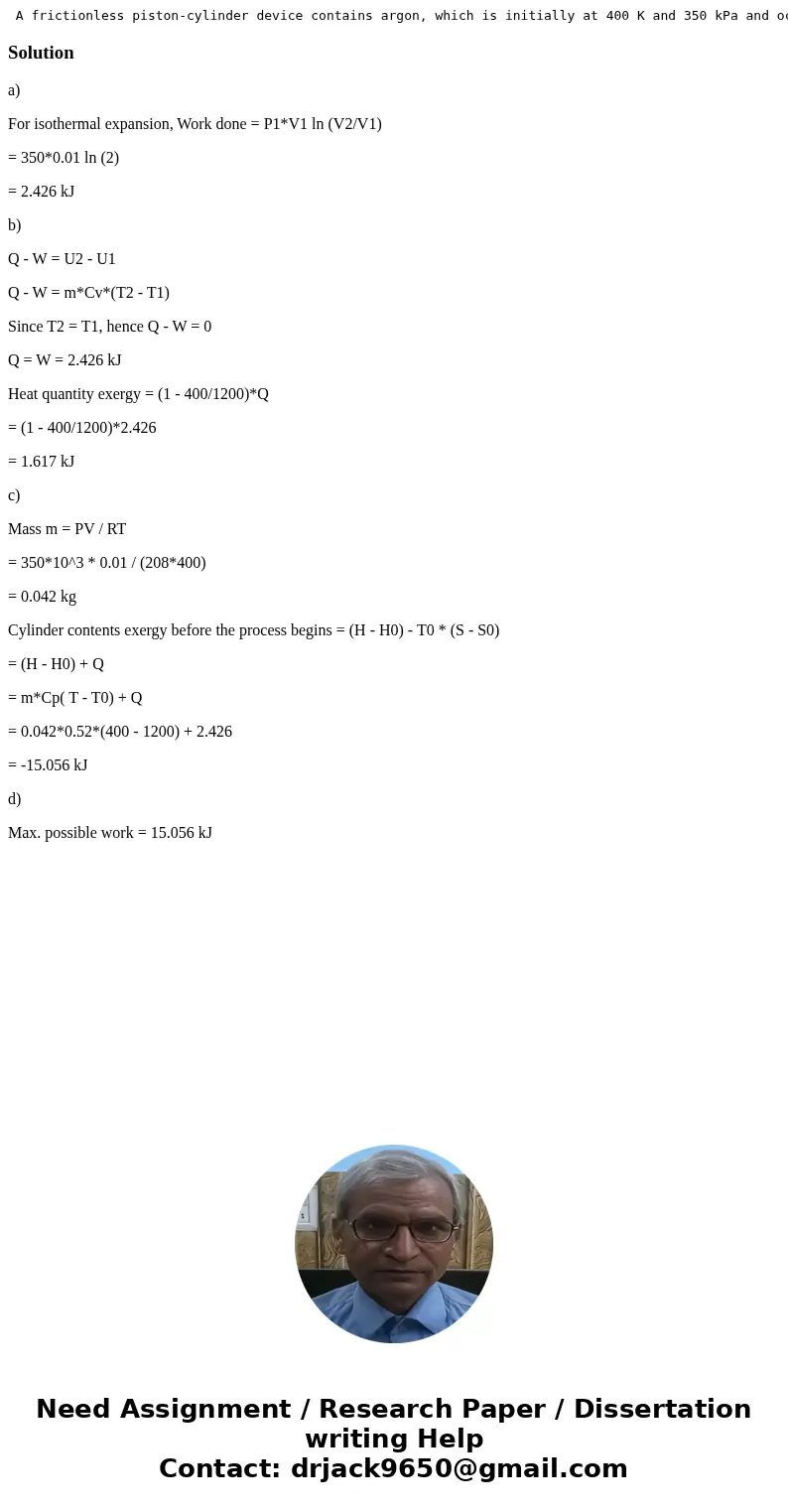A frictionless pistoncylinder device contains argon which is
A frictionless piston-cylinder device contains argon, which is initially at 400 K and 350 kPa and occupies a volume of 0.01 m3. Energy is supplied as heat from a source of temperature 1200 K. The gas in the cylinder expands isothermal until the volume is twice as great as at the start. There is no other heat transfer between the cylinder content and the environment than that of the source. The surroundings are at 300 K and 100 kPa. a) Calculate the useful work that is available from this process in kJ. b) Calculate the amount of heat transferred to the cylinder contents and heat quantity exergy. c) Calculate the cylinder contents exergy before the process begins. d) Calculate the maximum possible amount of work that the system theoretically can perform and exergy destruction in the process that actually performed.
Solution
a)
For isothermal expansion, Work done = P1*V1 ln (V2/V1)
= 350*0.01 ln (2)
= 2.426 kJ
b)
Q - W = U2 - U1
Q - W = m*Cv*(T2 - T1)
Since T2 = T1, hence Q - W = 0
Q = W = 2.426 kJ
Heat quantity exergy = (1 - 400/1200)*Q
= (1 - 400/1200)*2.426
= 1.617 kJ
c)
Mass m = PV / RT
= 350*10^3 * 0.01 / (208*400)
= 0.042 kg
Cylinder contents exergy before the process begins = (H - H0) - T0 * (S - S0)
= (H - H0) + Q
= m*Cp( T - T0) + Q
= 0.042*0.52*(400 - 1200) + 2.426
= -15.056 kJ
d)
Max. possible work = 15.056 kJ

 Homework Sourse
Homework Sourse